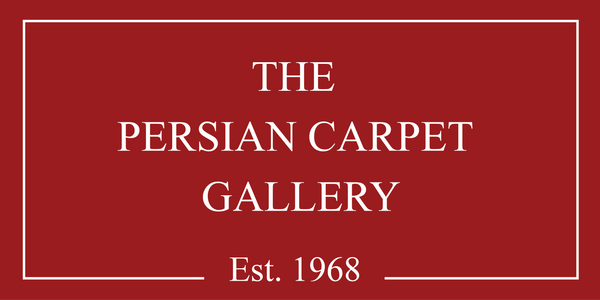Rugs Tell Stories
Among the world's most captivating treasures are Persian and antique Oriental rugs, standing as a testament to humanity's artistic heritage akin to the works of Leonardo da Vinci or Michelangelo. Housed in museum collections alongside renowned paintings, these antique rugs showcase artistic mastery comparable to that of great painting masters. Crafted by skilled carpet designers, they transcend mere beauty; they are narrative rugs, chronicling the journey of human civilization and the rise and fall of great empires.
 Initially crafted for practical use, hand-knotted pile carpets served to insulate against the cold of dirt floors and shielded walls from harsh nocturnal winds. However, beneath their utilitarian purpose, even the oldest rugs possess deeper meanings evident in their intricate designs.
Initially crafted for practical use, hand-knotted pile carpets served to insulate against the cold of dirt floors and shielded walls from harsh nocturnal winds. However, beneath their utilitarian purpose, even the oldest rugs possess deeper meanings evident in their intricate designs.
 As humanity adorned its clothing and furnishings with symbols and decorations, parallel to the advent of cave paintings, these designs acquired profound significance, mirroring the lives of their creators. Remarkably, many of these ancient symbols persist in contemporary carpet designs.
As humanity adorned its clothing and furnishings with symbols and decorations, parallel to the advent of cave paintings, these designs acquired profound significance, mirroring the lives of their creators. Remarkably, many of these ancient symbols persist in contemporary carpet designs.

 The carpets of the Beni Ourain and Berber tribes of Morocco stand as prime examples, adorned with symbols once etched onto the bodies of their creators. Reflecting the imagery of Neolithic cave paintings, these symbols offer insight into humanity's ancient past, embodying the primal language of our forebears.
The carpets of the Beni Ourain and Berber tribes of Morocco stand as prime examples, adorned with symbols once etched onto the bodies of their creators. Reflecting the imagery of Neolithic cave paintings, these symbols offer insight into humanity's ancient past, embodying the primal language of our forebears.
As time progressed, carpet designs evolved, weaving intricate narratives and historical episodes into their very fabric. Many carpets feature depictions of illustrious rulers and the triumphs of civilizations.
Carpet weaving entails deliberate and meticulous craftsmanship, necessitating careful planning and resource management. Weavers sourced materials from local fauna and flora, eventually incorporating cultivated silk to produce vibrant hues. The painstaking effort invested in dyeing and weaving rendered carpets precious commodities, regardless of their origins.
 The role of carpet weaving in the rise of the Ottoman and Safavid Empires cannot be overstated, evolving into a formal artistic discipline with the establishment of weaving schools. Carpets became sought-after exports, symbols of wealth and prestige primarily accessible to nobility and the affluent elite.
The role of carpet weaving in the rise of the Ottoman and Safavid Empires cannot be overstated, evolving into a formal artistic discipline with the establishment of weaving schools. Carpets became sought-after exports, symbols of wealth and prestige primarily accessible to nobility and the affluent elite.
 Featured in Renaissance paintings and adorning European courts, carpets found their way into prestigious cathedrals and mosques, with motifs and symbols becoming integral to the tradition. While formal carpets adorned urban settings with motifs such as flowers and celestial bodies, tribal carpets preserved simpler symbols, passing down oral traditions through generations.
Featured in Renaissance paintings and adorning European courts, carpets found their way into prestigious cathedrals and mosques, with motifs and symbols becoming integral to the tradition. While formal carpets adorned urban settings with motifs such as flowers and celestial bodies, tribal carpets preserved simpler symbols, passing down oral traditions through generations.
 In essence, knotted pile carpets transcend mere artwork or furniture; they encapsulate the epic of humanity's rise, with each rug bearing a narrative stretching back to antiquity.
In essence, knotted pile carpets transcend mere artwork or furniture; they encapsulate the epic of humanity's rise, with each rug bearing a narrative stretching back to antiquity.
